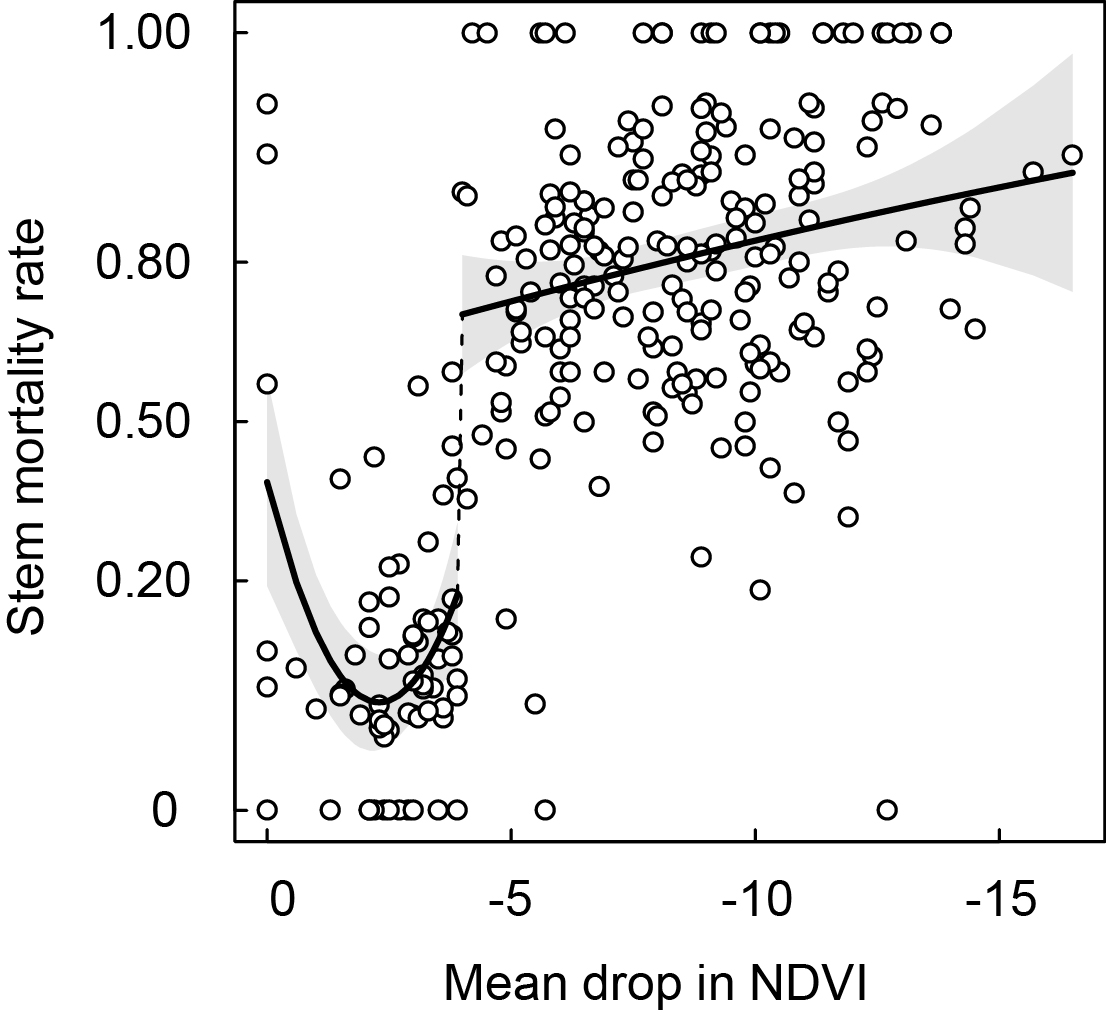Outbreaks by geometrid moths have caused extensive damage to mountain birch forest in northern Scandinavia during the last 15 years. A new study helps to explain why the damage has been so severe and suggests that the forest may fail to recover in the most heavily affected areas.
Outbreaks of geometrid moths have damaged enormous areas of mountain birch forest in northern Scandinavia since the early 2000s. The damage has been particularly severe in eastern Finnmark, and it has been assumed that this is due to the arrival of the winter moth (Operophtera brumata) – a southern moth species that has recently established itself in the region alongside the native autumnal moth (Epirrita autumnata). A new study by COAT researchers now sheds light on why the establishment of the winter moth has led to such extensive forest damage and warns about an uncertain future for the mountain birch forest.
The study shows that the relationship between accumulated moth defoliation of birch stands over a ten-year period (measured from satellite) and stem mortality rate is not linear, but rather takes the form of a tipping point, where mortality abruptly increases from less than 20% to over 70% when a critical threshold is exceeded. This implies that even small changes in accumulated defoliation pressure near the threshold can spell the difference between light and very severe forest damage. It is likely that the establishment of the winter moth increases the risk of exceeding the threshold, as outbreaks of this species usually follow 1-2 years after outbreaks by the autumnal moth, thereby causing outbreaks of longer total duration than when the autumnal moth is present alone.

Relationship between defoliation by moth larvae measured from satellite (mean percentage drop in NDVI for 2001-2010) and the mortality rate of birch stems. The solid lines represent predictions from a discontinuous regression model, which identifies a critical threshold at a mean drop in NDVI of 4%. From Vindstad et al. 2018.
The results also suggest that birch forest that has passed the threshold and suffered mass mortality of stems has the greatest challenges with respect to regeneration. The new study documents that production of both basal sprouts and saplings is most effective in the presence of surviving stems and trees. Loss of these positive feedbacks in severely damaged forest can cause regeneration to become very slow or to fail altogether, especially if reindeer and moose also browse on sprouts and saplings. Thus, in a future where both the winter moth and other southern moth species are expected to spread further northwards and eastwards, we may increasingly come to see persistent losses of mountain birch forest in areas that are currently densely forested.
Read the full article
Read more in this COAT Case story “Critical transitions in ecotone forests driven by pest outbreaks”